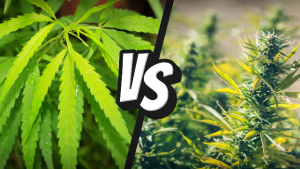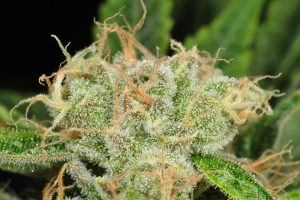You may have considered taking cannabidiol (CBD) and see if it will relieve symptoms of chronic pain, anxiety, or other conditions. But CBD product labels can be daunting to read and understand, particularly if you’re new to CBD. The interpretation of CBD labelling is made much more difficult by the fact that no non-prescription CBD drugs were licensed by the Food and Drug Administration (FDA).
Rather, it is up to you, the consumer, to do your investigation or rely on third-party tests to confirm whether a CBD product is legitimate and what it contains. So, here’s a 101 CBD labelling guide for helping you understand what you’ll be having.
1. Hemp vs. Marijuana

All the cannabis plants are hemp and marijuana. The distinction is that hemp plants have no more than 0.3 percent THC, and plants with marijuana have higher THC. CBD is either extracted from hemp, or from marijuana.
Depending on the location, as well as the laws in your country or state, you might be able to purchase CBD products extracted from marijuana and hemp. And you may only have access to CBD products extracted from hemp-or you may not have access to CBD products at all.
Understanding the difference in marijuana and hemp is crucial because CBD products extracted from marijuana can cause some psychoactive effects, and the THC contained in such items will appear on a drug test.
2. THC vs CBD

CBD is a compound present in the plant on cannabis. Tetrahydrocannabinol ( THC), the more common cannabinoid, is also present in the cannabis plant. CBD and THC – are very distinct from each other. THC is neurotoxic and related to the “big” marijuana use, but CBD does not cause this sensation.
Full Spectrum, Isolate or Broad Spectrum: What’s the difference?
- Full-spectrum CBD includes every one of the cannabis plant’s naturally available compounds including THC. However, the THC will never be more than 0.3 per cent in hemp-derived full-spectrum CBD.
- Broad spectrum CBD has most of the compounds that occur naturally, except THC.
- CBD isolate is the truest and purest form of CBD which is separated from the other cannabis plant products. THC should not be present in CBD isolate.
Your option of CBD isolate, full spectrum CBD or wide spectrum CBD will decide what you get with the specific CBD in your drug.
So, which one you would choose? Many people want to have the full range as they want the entire kit-and-caboodle of the advantages of the cannabis plant — for all the cannabinoids as well as other compounds acting synergistically. Many opt for wide-spectrum since they want all the terpenes and flavonoids but no THC. Some people would prefer CBD isolate because it is bland and odorless, and they don’t want to use any other compounds.
3. Cannabinoids, Terpenes, and Flavonoids

Now, about certain substances. What precisely are they? The cannabis plant contains over 100 cannabinoids, in additament to CBD and THC, and a whole lot of other compounds known as terpenes and flavonoids.
Cannabinoids go to work on the endocannabinoid pathway in your body. The endocannabinoid pathway aims to maintain an even keel on the nervous system and on the immune function.
Terpenes are yet another plant compound known to have therapeutic and medical benefits, as are cannabinoids. And it has been shown that flavonoids, compounds also present in green tea, and some fruits, protect against illness.
4. How to know exactly what you are getting?
Once you have reached a choice regarding the sort of product you are looking for, you will want to confirm the product’s ingredient label. Make sure that the product does contain CBD or cannabidiol, so that you don’t waste your money. Bear in mind that certain brands will mention CBD as a cannabis derivative, arising from ever-changing laws and regulations.
But don’t be misled by items that don’t include cannabidiol or hemp extract, and name either hemp seeds, hemp oil, or seed oil from Cannabis sativa. Some ingredients aren’t similar to CBD. Look closely at the list of ingredients so you are not allergic to anything.
If you purchase a CBD oil, it’s likely that the product will also include a carrier oil to preserve and stabilise the CBD and help your body consume it. That is why grapeseed oil, olive oil , MCT oil, or even cold-pressed hempseed oil may be one of the key-ingredients in the product.
A natural or chemical flavoring or coloring can also be found in a CBD oil or edible. If you are purchasing a full spectrum drug, review the percentage of THC to make sure it meets your requirements. If you are buying a broad- or full-spectrum product, it also might list the cannabinoids and terpenes that are included, although these are often included in the analysis certificate (COA), which we’ll tell you more about in the coming section.
5. About third party Testing

A strong CBD drug comes with a COA. That means it has been checked by a third-party outside laboratory who has no interest in the drug. COA might be accessible while shopping using your mobile phone to scan the QR code on the product. Most drug pages or sellers also hold the COA. If this is not the case, contact the provider and ask for the COA. Initially it might seem like a handful of gobbledygook, but you are looking for a few critical indicators:
- Label Accuracy – Firstly, quintuple-check that the COA levels of CBD and THC conform to what is mentioned on the product label. Inaccuracies in the packaging is a frequent problem for CBD drugs.
One analysis showed that only about 31 per cent of items are labelled correctly. Researchers found that, after evaluating 84 CBD items sold online, about 43 percent had a higher concentration than reported with respect to CBD and about 26 percent had less than estimated.
- Cannabinoid Profile – If you have a full- or broad-spectrum product, look for a list of cannabinoids as well as other compounds. The list will contain cannabinoids, such as cannabinol (CBN), cannabidiolic acid (CBDA), cannabichromene (CBC), and cannabigerol (CBG).
- Lab Charts – Search for analyzes on heavy metals and pesticides, too. They will decide whether a single contaminant is detected at all, and if so, whether it is under a reasonable intake cap. Check these charts’ status column, and make sure that it says “pass.”
6. What’s in a serving and determining CBD concentration
There is a lot of confusion that can come into effect when you try to calculate the amount of CBD in an item and just how much you get from a serving. A number that is always in the bigger print usually reports the volume of CBD in milligrams for the entire drug, not the quantity or dosage of the serving. Look for mg/mL on CBD oil labels instead. That’s what decides the concentration of CBD at the drug.
For eg, if you have a bottle of CBD oil of 2,000 milligrams ( mg) of 40 mg / mL, you can measure a milliliter, or a fraction of it if you prefer, using the dropper included. Or you could have a box with 30 pieces of CBD gummies telling 300 mg in large lettering then each serving will be equal to 10 mg.
7. Buying CBD products
If you are wondering, how to and from where to buy credible CBD products, there are several options to choose from. Oils, topicals, and edibles can be purchased online, directly from several retailers. But Amazon does not allow CBD purchases. A search there will lead to a page of hemp seed products which probably do not include CBD.
If you reside in a CBD-friendly state that has cannabis clinics, you may want to take full advantage of experienced staff ‘s advice. If you’ve a trusted compounding pharmacy that keeps CBD in stock, this is also an intelligent place to get a recommendation for a product that suits your needs. You can also get a referral from the doctor.
8. CBD safety considerations and side effects
CBD is mostly considered to be safe and the most common side effects can range from:
- Diarrhea
- Fatigue
- Changes in Weight
- Changes in appetite
If you are taking into account using CBD, it is a good idea to speak with your doctor first. CBD may interact with other over-the-counter medicines, nutritional supplements, and prescription medicines — particularly those containing a grapefruit warning.
This may also induce liver damage or harm for the same reasons as CBD may induce drug complications, a new study indicates. This study was carried out on mice, though, and researchers say that you would have to take extremely high doses to be a risk for this.